Nicknamed “The Natural State,” Arkansas is a land of rivers, forests, hot springs, and mountains that surprises visitors with its beauty and diversity. While it may not always appear on the top of travel lists, those who venture here quickly discover why Arkansas is treasured by outdoor enthusiasts, history lovers, and seekers of peace and authenticity.
The backbone of the state is formed by the Ozark and Ouachita Mountains, ranges that carve dramatic ridges, lush valleys, and sparkling waterfalls across the landscape. Here, winding highways like Scenic Byway 7 or the Pig Trail showcase vistas as stunning as any in the American South. Adventure abounds, whether hiking to Whitaker Point (Hawksbill Crag), paddling the Buffalo National River, or exploring underground wonders in Blanchard Springs Caverns.
Arkansas is also a place of healing and history. Hot Springs National Park has attracted visitors for centuries to bathe in its thermal waters, while cities such as Little Rock tell stories of civil rights struggles and resilience. Small towns like Eureka Springs, with its Victorian charm, or Mountain View, the “folk music capital of the world,” preserve cultural traditions and offer warm welcomes.
Water is central to Arkansas’s identity: with over 600,000 acres of lakes and rivers, it is a paradise for anglers, boaters, and anyone who loves to be near water. At the same time, its museums, presidential library, historic battlefields, and thriving music scene ensure there is as much cultural richness as natural beauty.
Arkansas is a state of hidden gems and proud heritage. It may call itself “natural,” but it is also soulful—a place where wilderness and culture, history and modern life, flow together like the rivers that shape it.
Hot Springs National Park
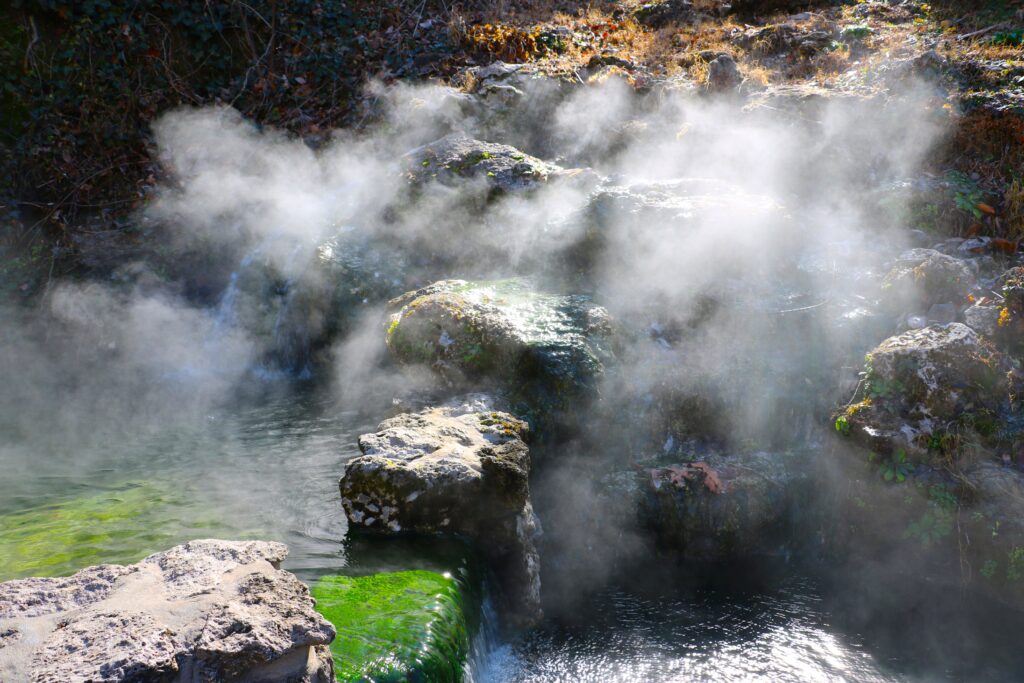
Few places capture Arkansas’s spirit as vividly as Hot Springs National Park. Nestled in the Ouachita Mountains, this area has been famous for centuries thanks to its thermal springs. Native Americans considered the waters sacred, while later visitors sought them for healing and relaxation. By the late 19th century, Hot Springs had become a fashionable spa town, earning the nickname “America’s Spa.”
Today, Bathhouse Row remains the centerpiece. These grand, historic bathhouses, many still operating, allow visitors to soak in thermal waters just as people did more than a hundred years ago. Some bathhouses have been transformed into museums, breweries, and cultural spaces, preserving the charm while adding modern appeal.
But the park is not only about the baths. It also includes over 26 miles of hiking trails, scenic drives, and mountain overlooks. Visitors can climb the Hot Springs Mountain Tower for sweeping views, or explore Gulpha Gorge and its serene creekside campsites. The blend of urban and natural—historic downtown with its lively restaurants and shops set against a backdrop of forested hills—is unique among U.S. national parks.
Hot Springs National Park combines history, wellness, and natural beauty, making it an essential Arkansas destination.
Little Rock

As Arkansas’s capital, Little Rock is both the state’s cultural hub and a city steeped in history. Its most significant landmark is the Little Rock Central High School National Historic Site, where nine African American students bravely integrated the school in 1957, a pivotal moment in the Civil Rights Movement. The site remains one of the most powerful places to learn about American history.
The city also hosts the William J. Clinton Presidential Library and Museum, offering insights into the life and legacy of the 42nd U.S. president. Set along the Arkansas River, the library sits within a vibrant riverfront area filled with parks, trails, and art installations.
Little Rock also surprises with cultural richness. The Arkansas Arts Center and the Historic Arkansas Museum preserve creativity and heritage, while local neighborhoods offer live music, craft breweries, and Southern cuisine. The River Market District is particularly lively, blending dining, shopping, and nightlife with community spirit.
For outdoor lovers, nearby Pinnacle Mountain State Park provides hiking and panoramic views. Little Rock combines historic weight with modern vitality, making it a city where the past and present stand side by side.
Buffalo National River
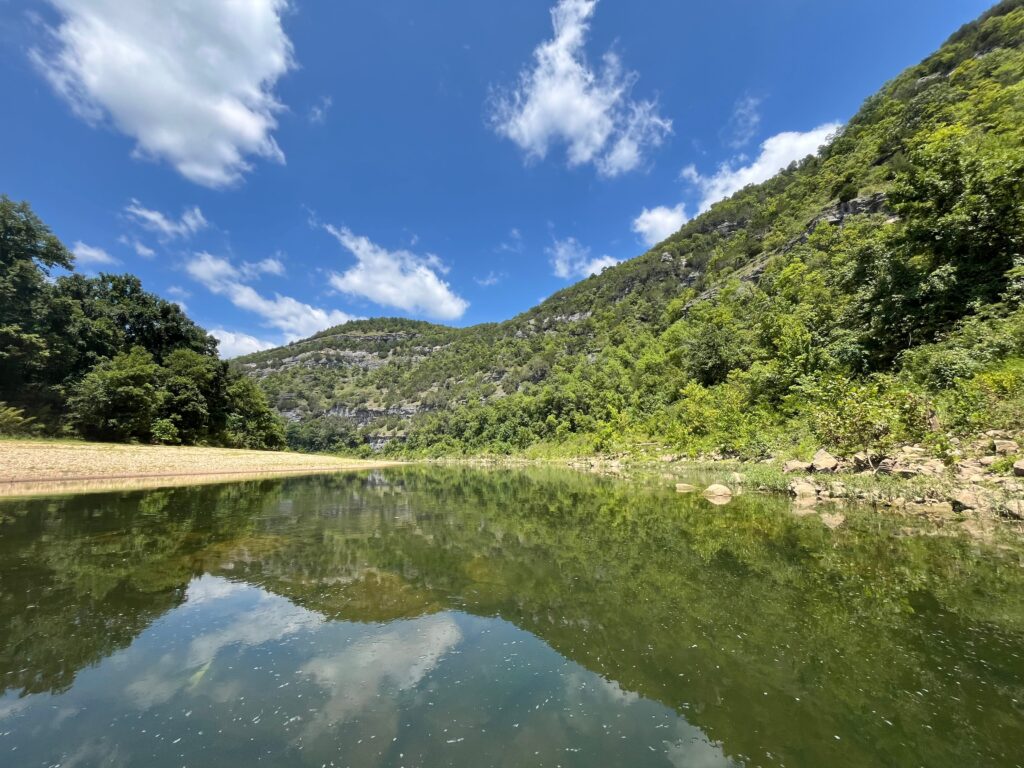
The Buffalo National River is one of Arkansas’s greatest natural treasures and was the first river in the United States to be designated as a national river in 1972. Flowing freely for more than 135 miles, it remains undammed, preserving its wild and pristine character.
The Buffalo winds through the Ozark Mountains, creating dramatic limestone bluffs, hidden caves, and lush valleys. For paddlers, the river offers a range of experiences—from gentle floats to more challenging stretches depending on the season. Camping along the riverbanks, stargazing in the dark skies, and listening to the water’s steady current create unforgettable memories.
The area is also rich in hiking opportunities. Trails lead to stunning vistas like Whitaker Point (Hawksbill Crag) and Hemmed-In Hollow Falls, the tallest waterfall between the Rockies and the Appalachians. Wildlife flourishes here, from elk herds to bald eagles, making it a paradise for nature photographers.
Buffalo National River is more than a waterway—it is a place of peace, adventure, and natural wonder, embodying the wild heart of Arkansas.
Eureka Springs

Tucked into the Ozark Mountains, Eureka Springs feels like stepping back in time. The town is famous for its Victorian architecture, winding streets, and natural springs that once attracted health-seekers. Unlike many planned cities, Eureka Springs developed organically around the hillsides, resulting in a maze of charming streets and hidden stairways.
Downtown Eureka Springs is listed on the National Register of Historic Places, with preserved 19th-century buildings now housing quirky shops, galleries, and cozy cafés. The city is also known for its vibrant arts scene, with numerous festivals, music performances, and galleries celebrating local creativity.
Eureka Springs is home to the striking Thorncrown Chapel, an architectural masterpiece made of wood and glass nestled in the forest, often considered one of the most beautiful chapels in America. Another highlight is the Great Passion Play, an outdoor performance that draws thousands each year.
Surrounded by the Ozarks, Eureka Springs also offers outdoor adventures, from boating on Beaver Lake to exploring caves and trails. The blend of history, artistry, and natural beauty makes this small town one of Arkansas’s most beloved destinations.
Crater of Diamonds State Park
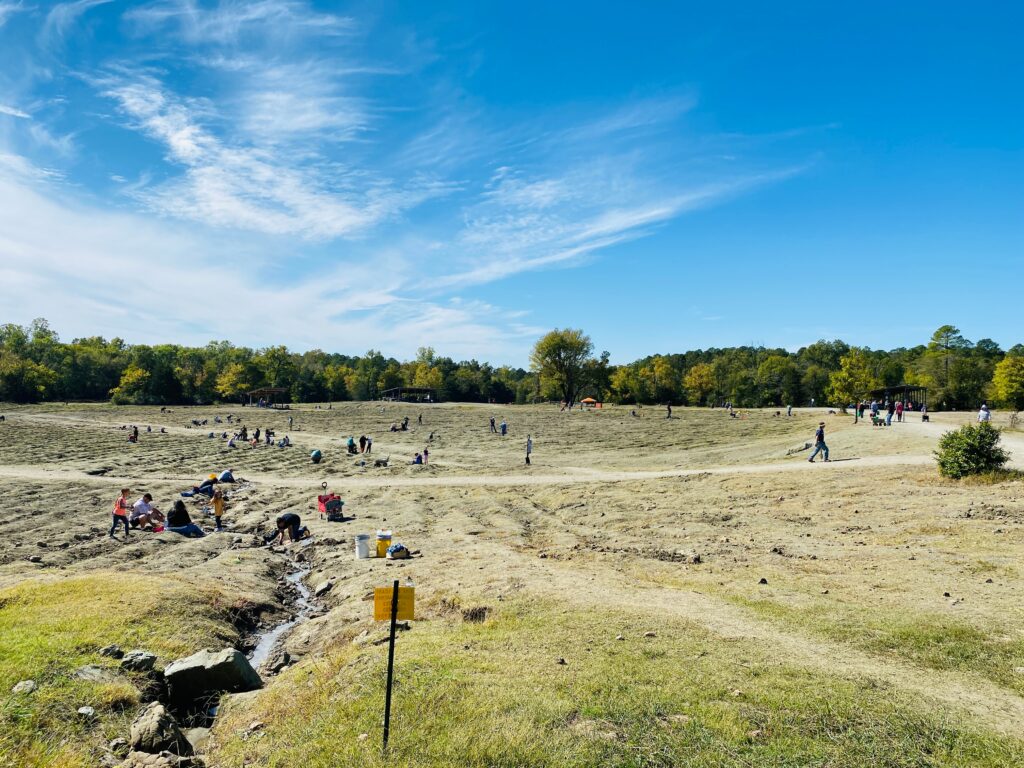
Arkansas holds a unique claim to fame: it is the only place in the world where the public can search for diamonds in their original volcanic source. At Crater of Diamonds State Park near Murfreesboro, visitors can dig, sift, and search through a 37-acre field where diamonds have been found for over a century.
Since it became a state park in 1972, more than 33,000 diamonds have been discovered here, including some weighing more than 40 carats. What makes it special is that whatever you find, you keep—whether it’s a sparkling diamond, amethyst, garnet, or other gemstone.
Beyond the diamond field, the park offers interpretive exhibits, walking trails, and a water park for families. For many, the excitement lies not only in the possibility of striking it rich but also in experiencing a place unlike anywhere else on earth.
Crater of Diamonds combines geology, history, and a sense of adventure, offering visitors a hands-on connection to Arkansas’s natural wonders.
Arkansas Post National Memorial

The Arkansas Post National Memorial holds a special place in American history as the site of the first European settlement in the lower Mississippi Valley, founded by the French in 1686. Over the centuries, it served as a trading post, military outpost, and even the first territorial capital of Arkansas. Today, the memorial preserves this layered history while offering a peaceful retreat into nature.
Visitors can explore the museum exhibits, which detail the region’s Native American heritage, French and Spanish influences, and Civil War battles fought here. Outside, trails wind through woodlands and wetlands, making the site a haven for birdwatchers and wildlife enthusiasts. White-tailed deer, wild turkeys, and migratory waterfowl are often spotted.
The blend of history and nature is what makes Arkansas Post unique. Walking the grounds, one can almost sense the stories embedded in the landscape. It’s a reminder that Arkansas’s story begins long before statehood, shaped by centuries of human and natural drama.
Blanchard Springs Caverns
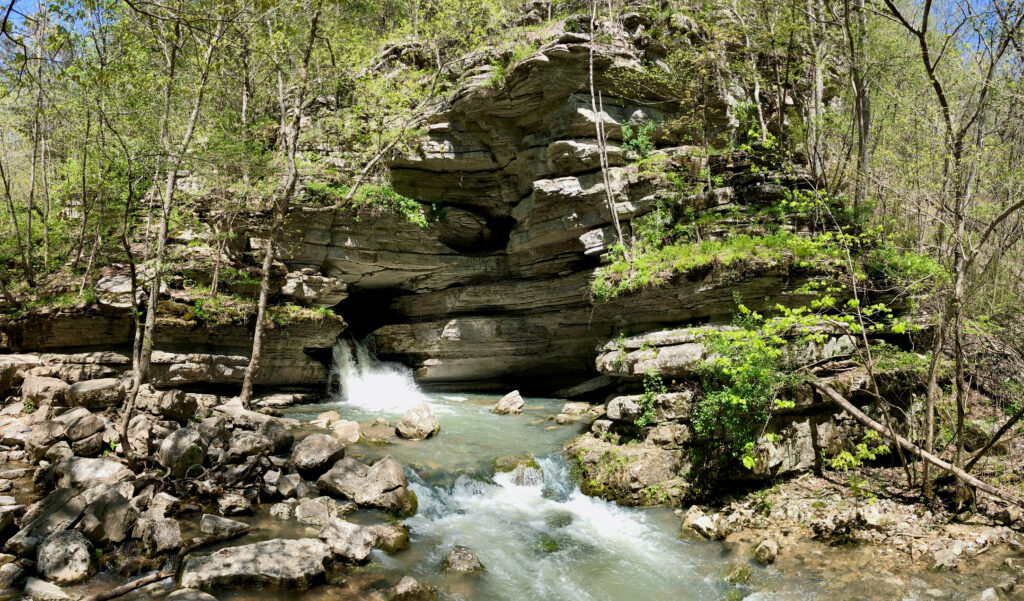
Hidden beneath the Ozark National Forest lies Blanchard Springs Caverns, one of the most spectacular cave systems in the United States. Known as the “Living Cave” because its formations continue to grow, Blanchard Springs is a wonderland of stalactites, stalagmites, and flowstones formed over millions of years.
Guided tours allow visitors to explore different sections of the cave, from the dramatic Cathedral Room—large enough to fit several football fields—to smaller passages adorned with delicate mineral formations. Each tour is illuminated with expert lighting that highlights the shimmering beauty of the underground world.
Above ground, the Blanchard Springs area is just as captivating. Hiking trails lead to the picturesque Blanchard Springs, where water gushes from the mouth of a cavern into a clear pool. Camping, fishing, and mountain biking make this a true outdoor destination.
Blanchard Springs Caverns offers a glimpse into the hidden heart of the Ozarks, blending geology, adventure, and natural beauty into an unforgettable experience.
Mount Magazine State Park

Rising to 2,753 feet, Mount Magazine is the highest point in Arkansas, offering sweeping vistas of the surrounding valleys and mountains. This dramatic peak, located in the Ozark-St. Francis National Forest, has long drawn adventurers and nature lovers.
At the heart of the park is the Lodge at Mount Magazine, where visitors can enjoy modern comfort alongside breathtaking cliffside views. The park is a playground for outdoor activities: hiking trails explore wildflower-filled meadows and dense forests; hang gliding launches from the summit attract thrill-seekers; and mountain biking trails challenge riders with rugged terrain.
Wildlife is abundant, from black bears and white-tailed deer to colorful butterflies that thrive in the mountaintop’s unique ecosystem. In fact, Mount Magazine is renowned for its butterfly diversity, hosting festivals dedicated to these delicate creatures.
For those who simply want serenity, the sunsets from the lodge or overlooks are among the most stunning in the state. Mount Magazine combines Arkansas’s natural grandeur with opportunities for adventure and quiet reflection.
Devil’s Den State Park
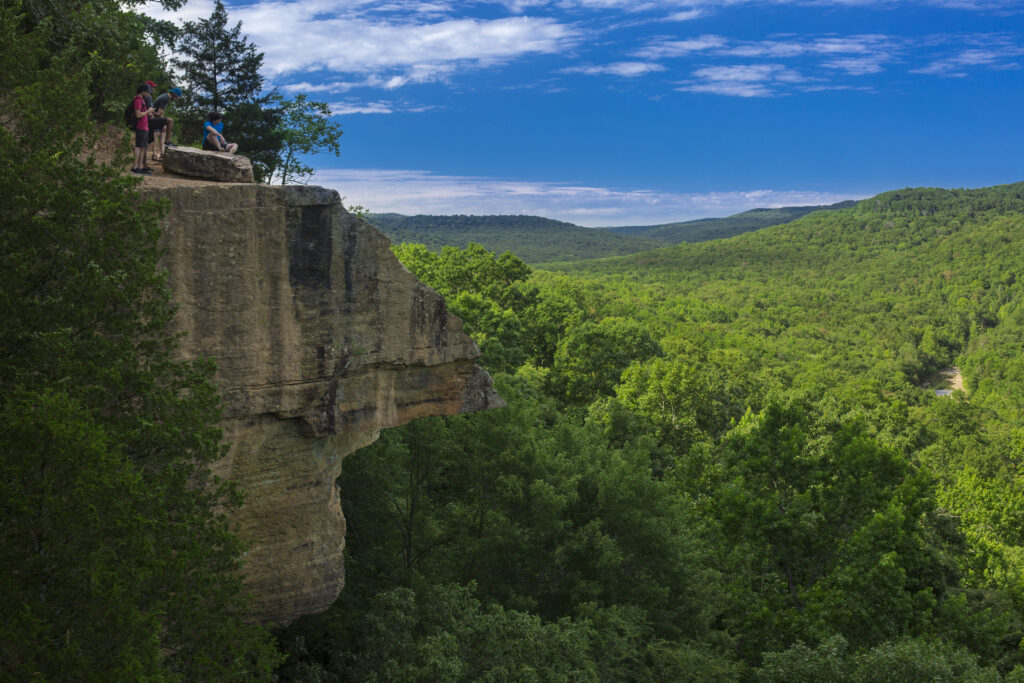
Nestled in the Ozark Mountains, Devil’s Den State Park is a favorite for hikers, campers, and families seeking outdoor escape. Built during the 1930s by the Civilian Conservation Corps, the park is famous for its rustic stone cabins, bridges, and trails that harmonize beautifully with the landscape.
The park’s centerpiece is Lee Creek, which winds through valleys and caves, creating opportunities for fishing and swimming. Trails such as the Yellow Rock Trail lead to stunning bluff views, while the Devil’s Den Trail takes visitors past caves, crevices, and unique rock formations. Many of these formations create natural “chimneys” and passageways, fueling the park’s mysterious reputation.
In spring, wildflowers cover the hillsides, while autumn brings brilliant foliage. The park is also known for its caves, once home to bat colonies, and though some are closed to protect the animals, the geology remains a major draw.
With its combination of natural beauty, history, and family-friendly amenities, Devil’s Den is a cornerstone of Arkansas’s state park system.
Crystal Bridges Museum of American Art
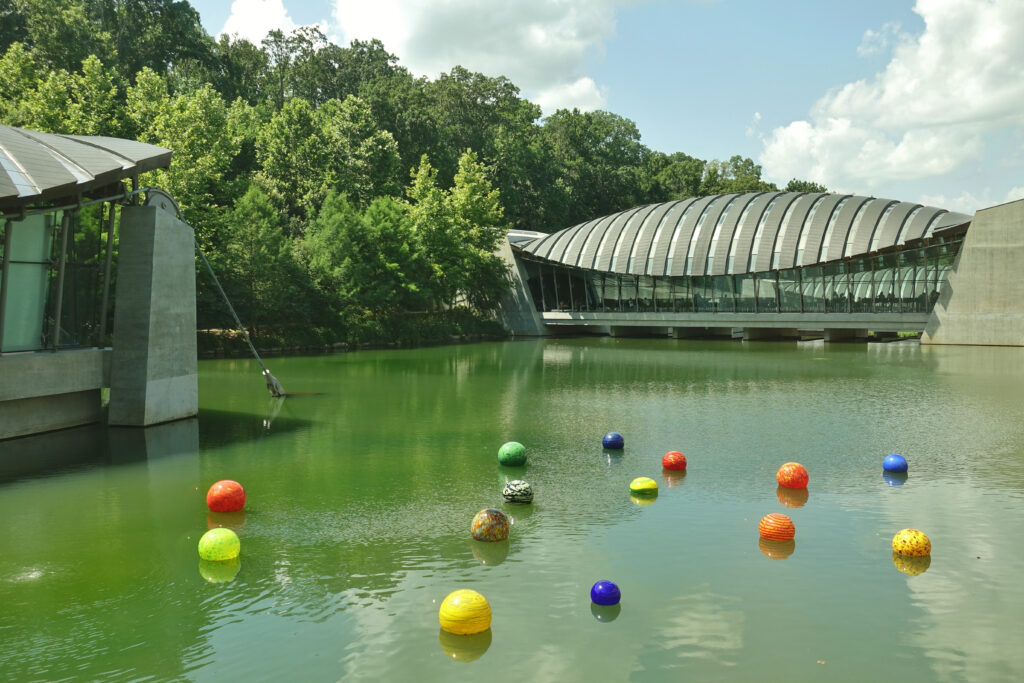
Located in Bentonville, the Crystal Bridges Museum of American Art is one of the most remarkable cultural institutions in the South. Founded by Alice Walton, daughter of Walmart founder Sam Walton, the museum has redefined Arkansas as a destination for world-class art.
The museum’s collection spans five centuries of American art, from colonial portraits to contemporary works by artists like Andy Warhol and Georgia O’Keeffe. Temporary exhibitions bring in treasures from around the world, ensuring there is always something new to see.
The architecture itself is a masterpiece. Designed by Moshe Safdie, the museum’s glass-and-wood pavilions nestle among ponds and forest trails, seamlessly blending nature and art. Visitors can walk the Ozark trails surrounding the museum, where outdoor sculptures and installations enrich the experience.
Crystal Bridges is more than a museum—it is a cultural destination that bridges Arkansas’s natural beauty with artistic achievement, placing the state on the global art map.
Thorncrown Chapel
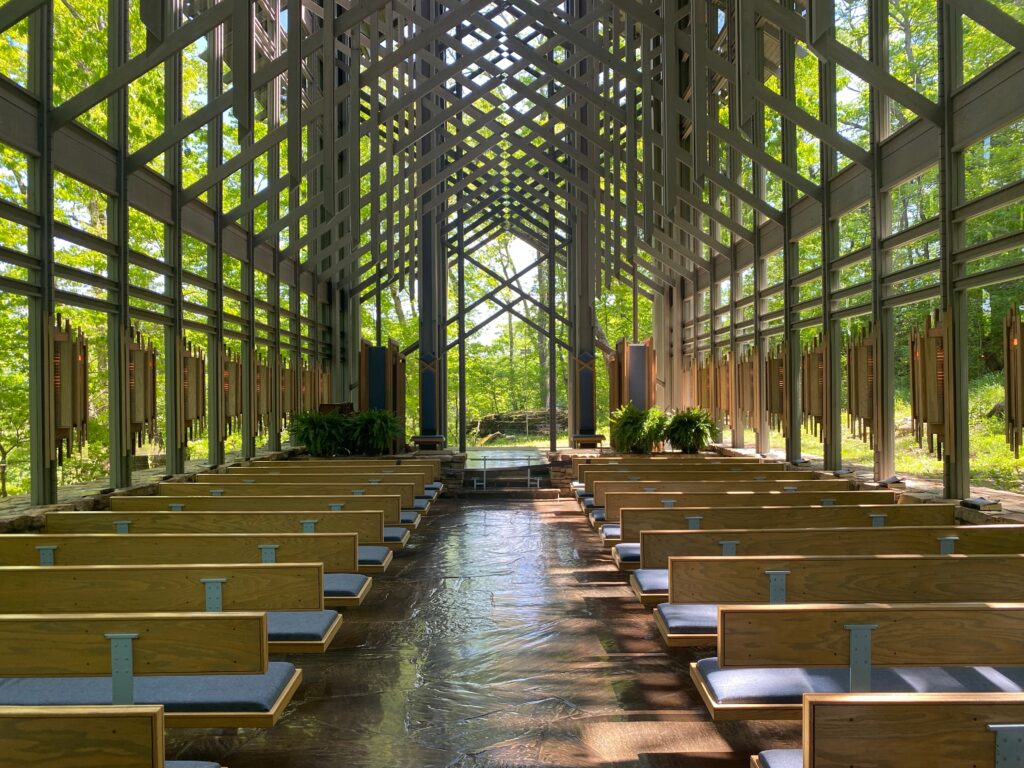
Set in the woods near Eureka Springs, Thorncrown Chapel is one of Arkansas’s most celebrated landmarks and a masterpiece of modern architecture. Designed by E. Fay Jones, a student of Frank Lloyd Wright, the chapel opened in 1980 and quickly gained international acclaim for its harmony with nature.
Constructed from native stone and timber, and featuring over 6,000 square feet of glass, Thorncrown seems to dissolve into the forest around it. Sunlight filters through the canopy and into the chapel, creating an ever-changing play of light and shadow that gives the interior a spiritual, almost otherworldly quality.
The chapel is open daily for visitors, offering a space not only for worship but also for quiet reflection, weddings, and music performances. Its simple yet profound design has earned it a place on the American Institute of Architects’ list of the top buildings of the 20th century.
Thorncrown Chapel exemplifies Arkansas’s ability to inspire through both natural beauty and human creativity, making it a must-see for travelers seeking peace and inspiration.
Heber Springs & Greers Ferry Lake

Nestled in the foothills of the Ozarks, Heber Springs and the nearby Greers Ferry Lake form one of Arkansas’s most beloved recreational areas. Originally a health resort known for its mineral springs, Heber Springs has evolved into a charming small town with boutiques, art galleries, and seasonal festivals.
Greers Ferry Lake, created by the Greers Ferry Dam, is the centerpiece. Spanning more than 40,000 acres with 340 miles of shoreline, it is perfect for boating, fishing, swimming, and scuba diving. The lake’s clarity and scenic beauty make it a regional treasure.
The area is also home to the Little Red River, renowned for its world-class trout fishing. Anglers come from far and wide to try their luck at catching record-breaking rainbow and brown trout. Surrounding trails and parks offer hiking and picnicking with panoramic views of the water.
Heber Springs and Greers Ferry Lake provide the perfect blend of relaxation, adventure, and small-town charm—an Arkansas getaway that highlights the state’s connection to water and nature.
Mount Nebo State Park
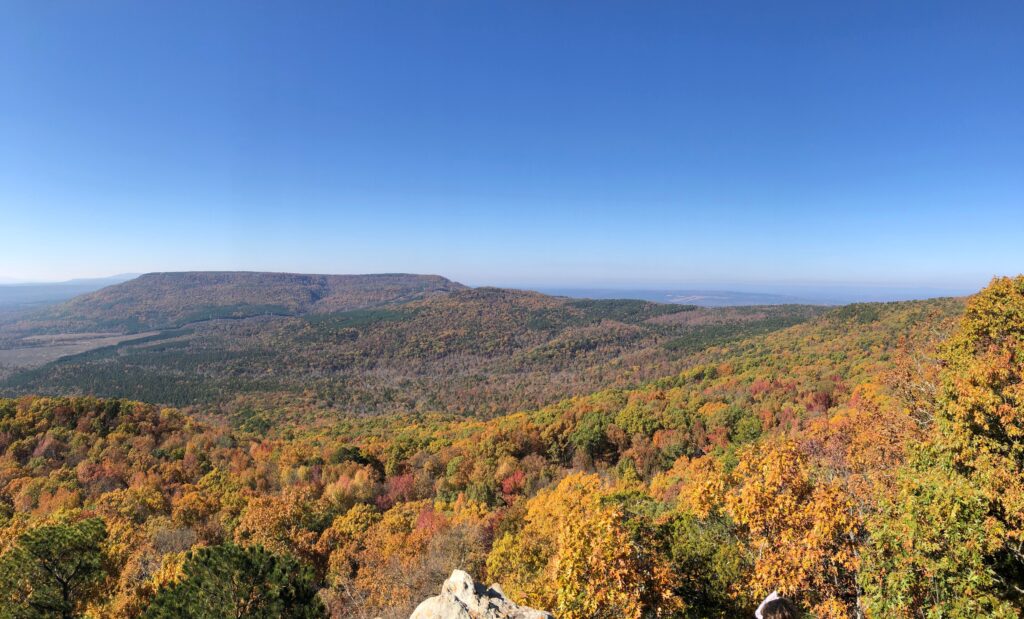
High above the Arkansas River Valley sits Mount Nebo State Park, a haven for hikers, campers, and those seeking sweeping views of the Natural State. At 1,350 feet, Mount Nebo is not Arkansas’s tallest peak, but its dramatic position overlooking the valley makes it unforgettable.
Visitors can explore a variety of trails, from the scenic Rim Trail that circles the mountaintop to more challenging paths leading to waterfalls and hidden creeks. The park’s rustic stone cabins, built in the 1930s by the Civilian Conservation Corps, remain popular lodging options and add historic charm.
Mount Nebo is also a destination for paragliders, who launch from the cliffs and soar above the valley. Birdwatchers delight in spotting hawks and eagles riding the thermals, while sunset views from the summit rival any in the state.
With its mix of adventure, history, and serene beauty, Mount Nebo is a quintessential Arkansas park, beloved by generations of visitors.
Fort Smith

On the western edge of Arkansas, Fort Smith stands as a city shaped by frontier history and cultural crossroads. Founded in 1817 as a military outpost, it later became infamous as the home of Judge Isaac Parker, the “Hanging Judge,” who presided over a turbulent period of law and order in the Old West.
The Fort Smith National Historic Site preserves this history, with the original fort, courtroom, and gallows open to explore. Exhibits bring to life the stories of soldiers, settlers, and Native Americans who shaped the region.
But Fort Smith is not only about history. Today, it is a thriving city known for its public art, particularly murals that cover downtown walls with vibrant colors and stories. Annual festivals, such as the Fort Smith Riverfront Blues Festival, add to the city’s lively atmosphere.
Blending gritty frontier tales with modern creativity, Fort Smith reflects both the struggles and resilience that define Arkansas’s identity.
Ozark Folk Center State Park
Located in Mountain View, the Ozark Folk Center State Park is dedicated to preserving and celebrating the rich traditions of Ozark culture. It is the only park of its kind in the United States, where visitors can immerse themselves in crafts, music, and heritage that have defined the region for generations.

The Craft Village is the heart of the park, where artisans demonstrate weaving, pottery, blacksmithing, woodworking, and more. Guests can interact with the craftspeople, learning skills passed down through centuries. Music fills the air as folk musicians perform traditional tunes on fiddles, banjos, and dulcimers, carrying on the legacy of Ozark mountain music.
Workshops and events invite visitors to try their hands at crafts or instruments, while the park’s herb garden showcases plants used for both medicine and cooking in Ozark culture. The center also includes a lodge and a restaurant serving classic Southern meals.
The Ozark Folk Center is not just a museum—it’s a living celebration of a way of life that continues to shape Arkansas’s cultural soul.
Mammoth Spring State Park

Near the Missouri border lies Mammoth Spring State Park, home to one of the largest natural springs in the United States. Pumping out over nine million gallons of water every hour, the spring forms a scenic 10-acre lake that feeds the Spring River. Its constant flow creates an ideal habitat for fish and wildlife, making the park popular with anglers and birdwatchers.
The site is not only about natural beauty but also history. In the 19th century, the spring’s power was harnessed to run a mill, and later, a hydroelectric plant. Visitors today can explore the restored mill building, historic train depot, and dam that once provided energy to the region. Interpretive exhibits tell the story of how people lived and worked alongside the spring.
With picnic areas, walking trails, and paddleboat rentals, Mammoth Spring State Park is both a family-friendly retreat and a place to reflect on the relationship between Arkansas’s natural resources and its communities.
Pea Ridge National Military Park

The Battle of Pea Ridge, fought in March 1862, was a pivotal Civil War clash that helped secure Missouri for the Union. Today, the battlefield is preserved as Pea Ridge National Military Park, offering one of the best-preserved Civil War sites in the country.
The park spans 4,300 acres and includes original battlefields, restored historic buildings, and a visitor center with exhibits detailing the strategies and human stories behind the conflict. A 7-mile driving tour, complemented by hiking and horse trails, takes visitors across fields and ridges where soldiers once fought.
Beyond its historical importance, the park also serves as a sanctuary of natural beauty, with rolling hills and woodlands offering quiet places for reflection. It is a site where the gravity of history meets the serenity of the Arkansas countryside, reminding visitors of the sacrifices made and the struggles endured during America’s most divisive war.
White River
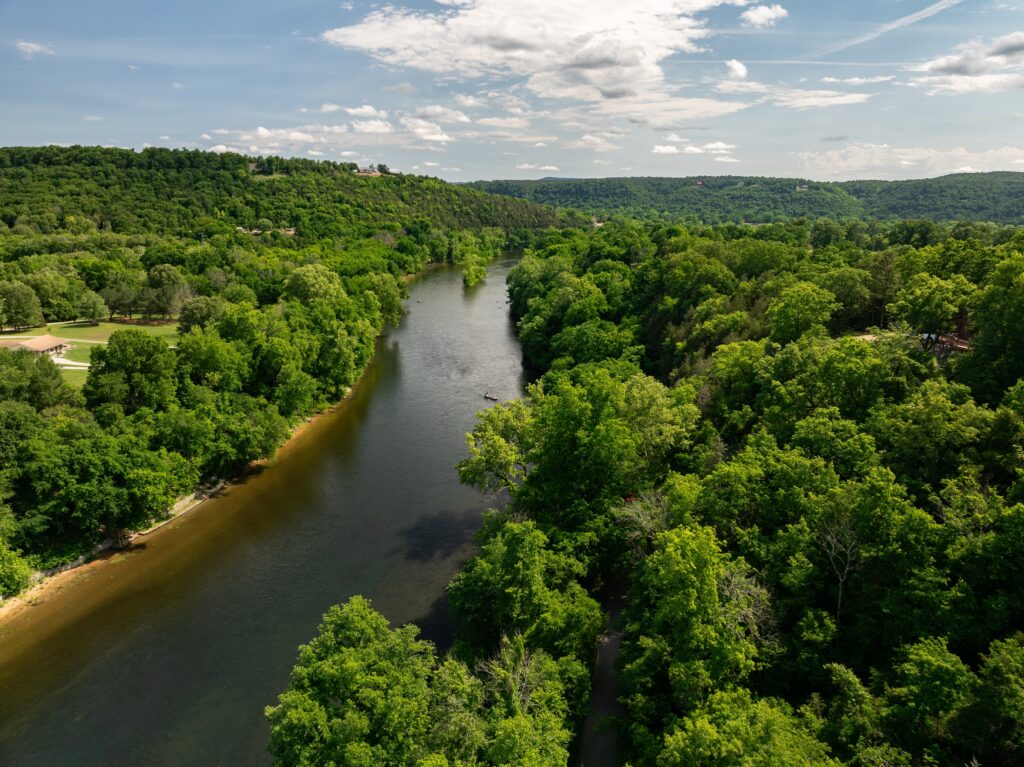
The White River is one of Arkansas’s most iconic waterways, winding nearly 720 miles through the Ozarks before flowing into the Mississippi River. For centuries, it has shaped the lives of the people who settled along its banks, from Native American tribes to modern fishing communities.
Today, the White River is best known for its world-class trout fishing. Stretching below the Bull Shoals and Norfork dams, the cold, clear waters are home to rainbow and brown trout that attract anglers from around the globe. Record-breaking catches have made the river legendary in the fishing world.
Beyond fishing, the White River offers excellent opportunities for boating, kayaking, and scenic floating trips. The surrounding valleys and bluffs provide breathtaking scenery, particularly in autumn when the hills blaze with color. Small riverside towns like Cotter and Calico Rock add charm, with welcoming lodges and diners that embody Arkansas hospitality.
The White River is both livelihood and leisure—a thread running through Arkansas’s natural and cultural fabric.
Lake Ouachita
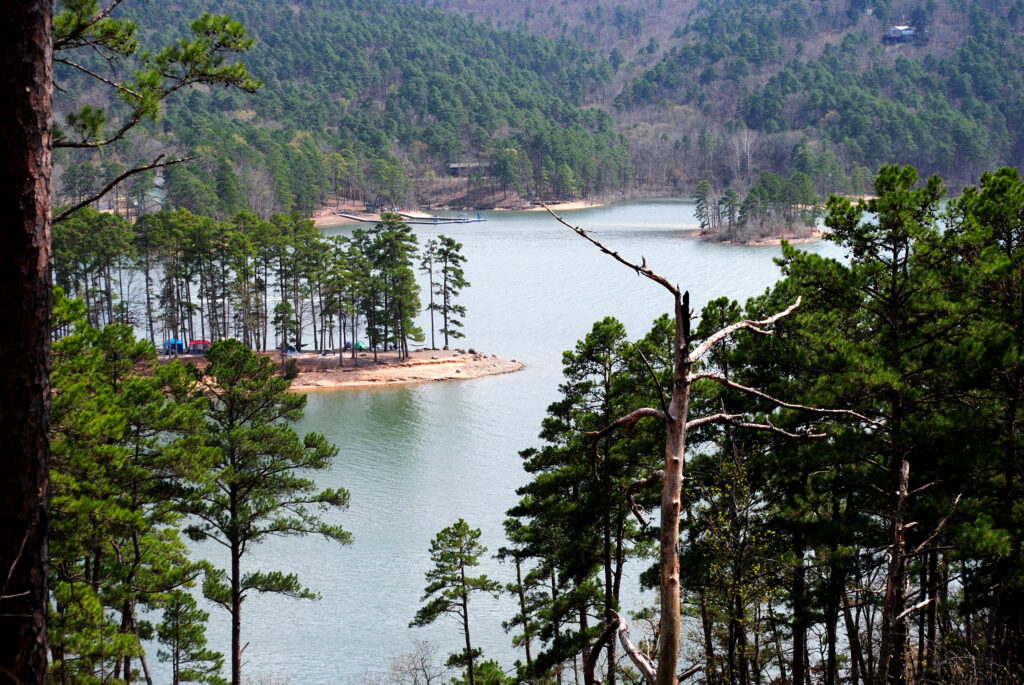
At over 40,000 acres, Lake Ouachita is the largest lake entirely within Arkansas and one of the cleanest lakes in the United States. Surrounded by the Ouachita National Forest, the lake’s pristine waters and 690 miles of shoreline make it a haven for outdoor recreation.
Boating, water-skiing, and scuba diving are popular, with underwater visibility reaching up to 20 feet in places. The lake is dotted with islands that provide secluded camping opportunities, while anglers prize it for striped bass, catfish, and crappie.
The lake’s health and clarity are carefully maintained, making it a model of conservation. Bald eagles, ospreys, and herons are frequently spotted along the shores. Nearby resorts and marinas cater to both families and adventurers, offering everything from houseboat rentals to luxury cabins.
Lake Ouachita represents Arkansas at its finest: wild, unspoiled, and endlessly inviting for those who love water and wilderness.
The Old Mill (North Little Rock)
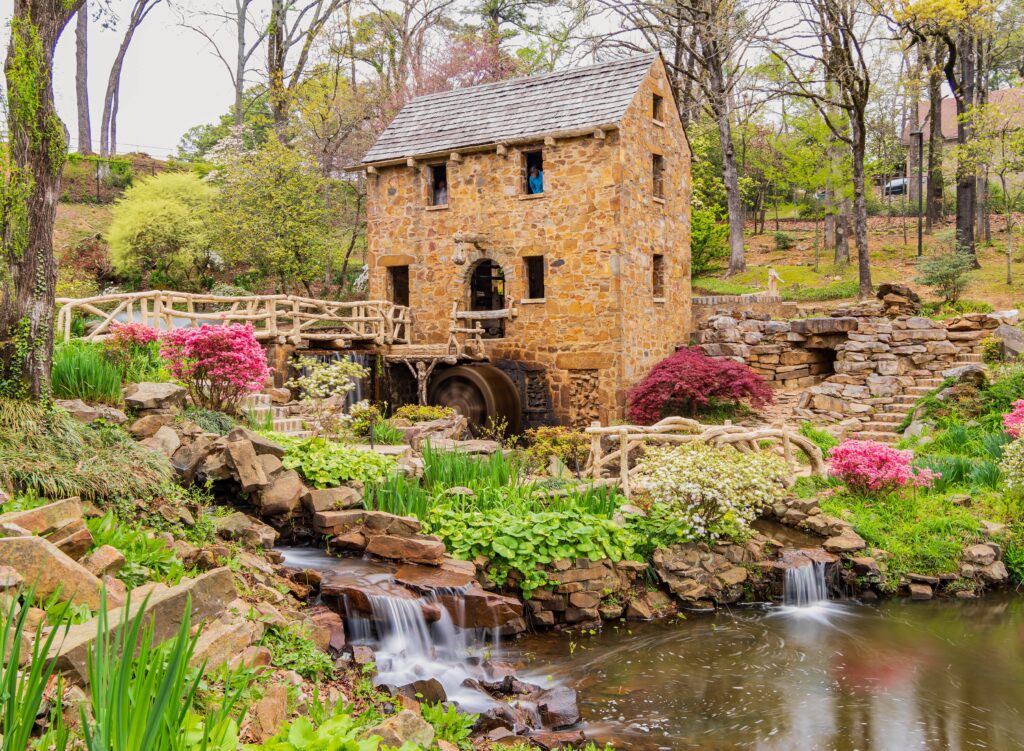
Few places combine charm and cinematic fame quite like The Old Mill in North Little Rock. Built in 1933, this picturesque mill was designed as a recreation of an 1880s water-powered gristmill. Though never functional, it has become an Arkansas icon thanks to its enchanting design and role in movie history.
The Old Mill appears in the opening scene of Gone with the Wind (1939), making it one of the only surviving film locations from the classic. Today, it draws visitors with its rustic stonework, wooden waterwheel, and beautifully landscaped grounds. Bridges, sculptures, and walking paths enhance its fairy-tale atmosphere.
The park surrounding the mill is a favorite for photographers, weddings, and quiet strolls. It reflects the vision of its creators, who wanted to celebrate pioneer life while creating a space of beauty and relaxation for the community.
The Old Mill is a small but unforgettable stop—where history, film, and artistry meet in the heart of Arkansas.
Mount Ida

Known as the “Quartz Crystal Capital of the World,” Mount Ida is a small town in the Ouachita Mountains with a reputation that sparkles—literally. The area’s unique geology has produced some of the clearest quartz crystals on Earth, drawing collectors, gem enthusiasts, and curious travelers alike.
Visitors can dig for their own crystals at mines open to the public, where the thrill of uncovering a sparkling cluster firsthand is unforgettable. Local shops and galleries also sell polished crystals and handmade jewelry, making for distinctive souvenirs.
Beyond its gem-stone fame, Mount Ida is a gateway to outdoor adventure. Surrounded by the Ouachita National Forest, it offers hiking, fishing, and boating opportunities. Lake Ouachita, nearby, provides crystal-clear waters perfect for swimming and camping. The town also hosts annual festivals celebrating its mineral heritage, where geology, crafts, and community spirit come together.
Mount Ida embodies Arkansas’s nickname as “The Natural State”—a place where both the earth’s treasures and the beauty of the outdoors are celebrated.
Petit Jean State Park
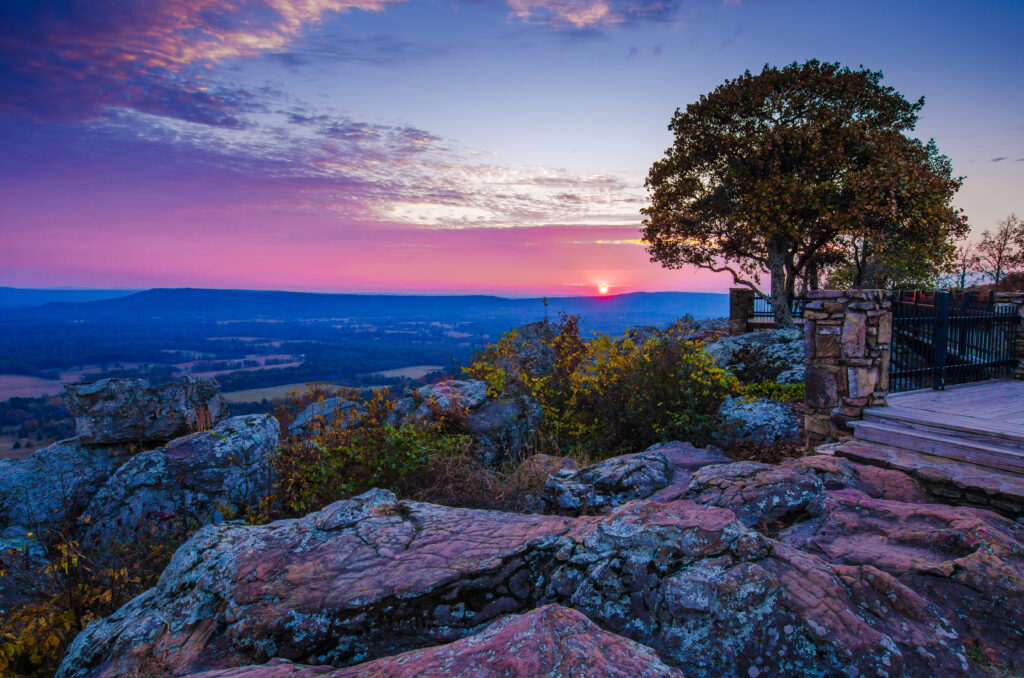
As Arkansas’s first state park, Petit Jean State Park holds a special place in the hearts of locals and visitors alike. Legend tells of a young French woman, Petit Jean, who disguised herself as a man to secretly accompany her lover to the New World. She died tragically in Arkansas, and her grave remains on the mountaintop that bears her name.
The park is as romantic as its legend. Scenic overlooks such as Stout’s Point provide sweeping views of the Arkansas River Valley. Trails wind past waterfalls, caves, and unique geological formations like the Turtle Rocks. Cedar Falls, plunging 95 feet, is the park’s most famous landmark and a highlight for hikers and photographers.
Historic stone lodges and cabins, built by the Civilian Conservation Corps in the 1930s, add rustic charm. Campgrounds and modern facilities make it welcoming for all types of travelers.
Petit Jean’s combination of natural beauty, history, and legend makes it one of Arkansas’s most iconic destinations.
Arkansas State Capitol

Standing proudly in Little Rock, the Arkansas State Capitol is a striking symbol of the state’s government and history. Completed in 1915, the building was modeled after the U.S. Capitol in Washington, D.C., with a grand dome and neoclassical design that make it one of the most beautiful capitol buildings in the country.
Constructed primarily of Arkansas limestone and marble, the Capitol houses the state’s legislative chambers, Supreme Court, and offices of the governor. Visitors can tour the building to see its ornate rotunda, intricate woodwork, and impressive art collections, including portraits of past governors and historic murals.
The grounds are equally significant. Monuments honor veterans, civil rights leaders, and fallen law enforcement officers, while manicured gardens and walking paths make the Capitol a peaceful retreat in the heart of the city.
The Arkansas State Capitol is more than a government building—it is a monument to the state’s identity and values, offering insight into its political and cultural history.
Garvan Woodland Gardens
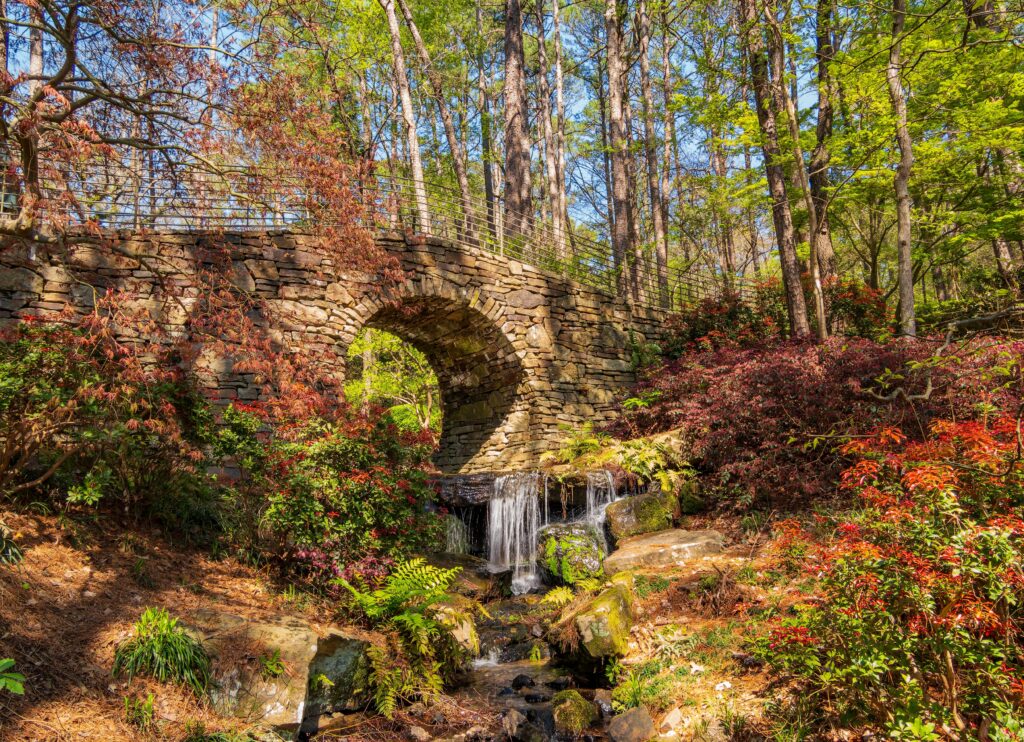
Just outside Hot Springs lies Garvan Woodland Gardens, a botanical paradise that highlights Arkansas’s natural beauty in every season. Developed by Verna Cook Garvan and gifted to the University of Arkansas, the gardens have become one of the state’s premier attractions.
Covering 210 acres, the gardens feature themed landscapes, from Japanese-inspired ponds to whimsical children’s areas. In spring, tulips and daffodils burst into color, while autumn brings fiery foliage. Year-round, visitors can enjoy walking trails shaded by towering pines and dotted with unique sculptures.
One of the garden’s highlights is the Anthony Chapel, a soaring glass-and-wood structure set among the trees. Much like Thorncrown Chapel, it seamlessly integrates architecture with nature, providing a breathtaking setting for weddings and quiet contemplation.
Garvan Woodland Gardens is a place of beauty and serenity, where art, architecture, and nature harmonize to create one of Arkansas’s most enchanting destinations.
Crowley’s Ridge Parkway

Running through eastern Arkansas, the Crowley’s Ridge Parkway is a designated National Scenic Byway that reveals one of the state’s most unique geological features. Crowley’s Ridge rises up to 200 feet above the surrounding Mississippi Delta, creating a narrow, forested ridge that stands out in the otherwise flat landscape.
The parkway stretches for more than 200 miles, connecting historic towns, state parks, and cultural sites. Along the way, travelers encounter places like Village Creek State Park, with its trails and fishing lakes, and the Hemingway-Pfeiffer Museum, where Ernest Hemingway wrote portions of A Farewell to Arms.
The ridge itself is covered in hardwood forests that burst into brilliant color each fall, making the drive particularly scenic. The byway also passes through small farming communities that showcase Arkansas’s agricultural heritage.
Crowley’s Ridge Parkway is more than a road—it is a journey through natural history, literature, and small-town life, offering a quieter but deeply rewarding Arkansas experience.
Helena

Nestled on the banks of the Mississippi River, Helena is a town where blues music, Civil War history, and Delta culture converge. Once a bustling river port, it played a key role during the Civil War, with sites like Battery C and the Helena Confederate Cemetery preserving its military past.
But Helena is best known for its music. The town is home to the King Biscuit Blues Festival, one of the world’s premier blues celebrations, drawing fans from across the globe each October. Visitors can explore the Delta Cultural Center, where exhibits highlight the region’s African American heritage and the birth of the blues.
The town’s riverfront is equally charming, with scenic views of the Mississippi, walking trails, and historic architecture. Helena represents both the struggles and triumphs of the Delta, making it one of Arkansas’s most culturally rich destinations.
Lake Chicot State Park
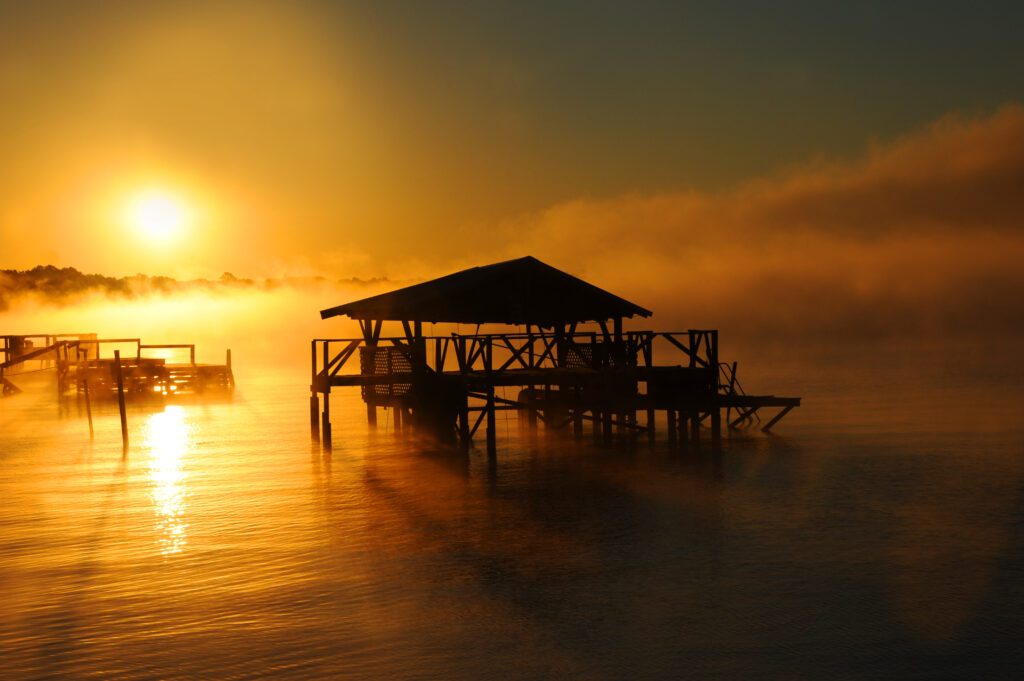
In the far southeastern corner of Arkansas lies Lake Chicot State Park, set on the largest oxbow lake in North America. The lake, formed by a former channel of the Mississippi River, stretches 20 miles and is surrounded by rich Delta farmland and forest.
The park is a paradise for anglers, known for its abundant bass, catfish, and crappie. Boating, kayaking, and birdwatching are equally popular, with migratory waterfowl and bald eagles frequenting the area.
Cabins, campgrounds, and picnic areas make it a welcoming retreat for families and outdoor enthusiasts. The sunsets over the water, painting the sky in gold and crimson, are some of the most beautiful in the state.
Lake Chicot is both a natural wonder and a peaceful escape, offering a slower pace that reflects the rhythm of the Delta.

